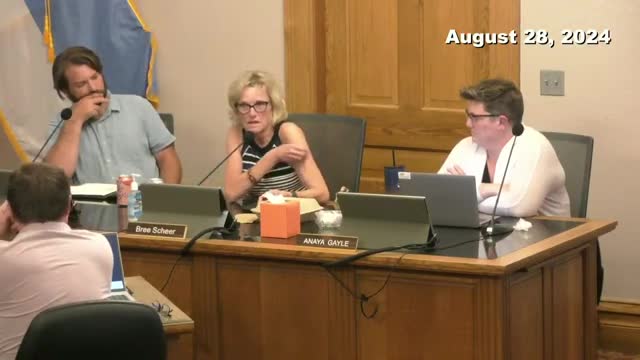City debates innovative housing solutions amid community concerns
August 28, 2024 | Salt Lake City Council and RDA Board meetings, Salt Lake City, Salt Lake County, Utah
This article was created by AI summarizing key points discussed. AI makes mistakes, so for full details and context, please refer to the video of the full meeting. Please report any errors so we can fix them. Report an error »

During a recent government meeting, officials discussed the growing trend of Accessory Dwelling Units (ADUs) and the implications of reducing lot sizes in Salt Lake City. The conversation highlighted the potential for increased housing development, particularly in areas with alleys, but raised concerns about the lack of alleys in certain neighborhoods, which could limit opportunities for growth.
Participants expressed enthusiasm for the idea of smaller lots, emphasizing the need to avoid flag lots and instead focus on full splits with easement or alley access. However, there was a consensus that limiting development to areas with alleys could hinder progress in neighborhoods lacking such infrastructure, particularly on the west side of the city.
Utility access emerged as a significant concern, with one official sharing personal experiences regarding shared sewer lines and the complications that arise from them. Suggestions included creating narrow utility access points for flag lots to ensure each property has its own utility connection, which would alleviate some of the logistical challenges.
The discussion also touched on the relationship between buildable area and maximum lot coverage, with officials noting that marginal increases in size could lead to larger single-family homes rather than the desired outcome of more housing units. There was a call for careful consideration of how these changes could impact home ownership opportunities, particularly for younger generations.
The potential for a private entity to submit a text amendment addressing these issues was mentioned, indicating that further developments could be on the horizon. The meeting concluded with a recognition of the complexities involved in introducing townhouses and attached housing, which may face resistance from residents concerned about changes to neighborhood aesthetics and density.
Overall, the meeting underscored the city's ongoing efforts to balance housing development with community concerns, as officials seek to create viable options for home ownership while navigating the challenges of urban planning.
Participants expressed enthusiasm for the idea of smaller lots, emphasizing the need to avoid flag lots and instead focus on full splits with easement or alley access. However, there was a consensus that limiting development to areas with alleys could hinder progress in neighborhoods lacking such infrastructure, particularly on the west side of the city.
Utility access emerged as a significant concern, with one official sharing personal experiences regarding shared sewer lines and the complications that arise from them. Suggestions included creating narrow utility access points for flag lots to ensure each property has its own utility connection, which would alleviate some of the logistical challenges.
The discussion also touched on the relationship between buildable area and maximum lot coverage, with officials noting that marginal increases in size could lead to larger single-family homes rather than the desired outcome of more housing units. There was a call for careful consideration of how these changes could impact home ownership opportunities, particularly for younger generations.
The potential for a private entity to submit a text amendment addressing these issues was mentioned, indicating that further developments could be on the horizon. The meeting concluded with a recognition of the complexities involved in introducing townhouses and attached housing, which may face resistance from residents concerned about changes to neighborhood aesthetics and density.
Overall, the meeting underscored the city's ongoing efforts to balance housing development with community concerns, as officials seek to create viable options for home ownership while navigating the challenges of urban planning.
View full meeting
This article is based on a recent meeting—watch the full video and explore the complete transcript for deeper insights into the discussion.
View full meeting

